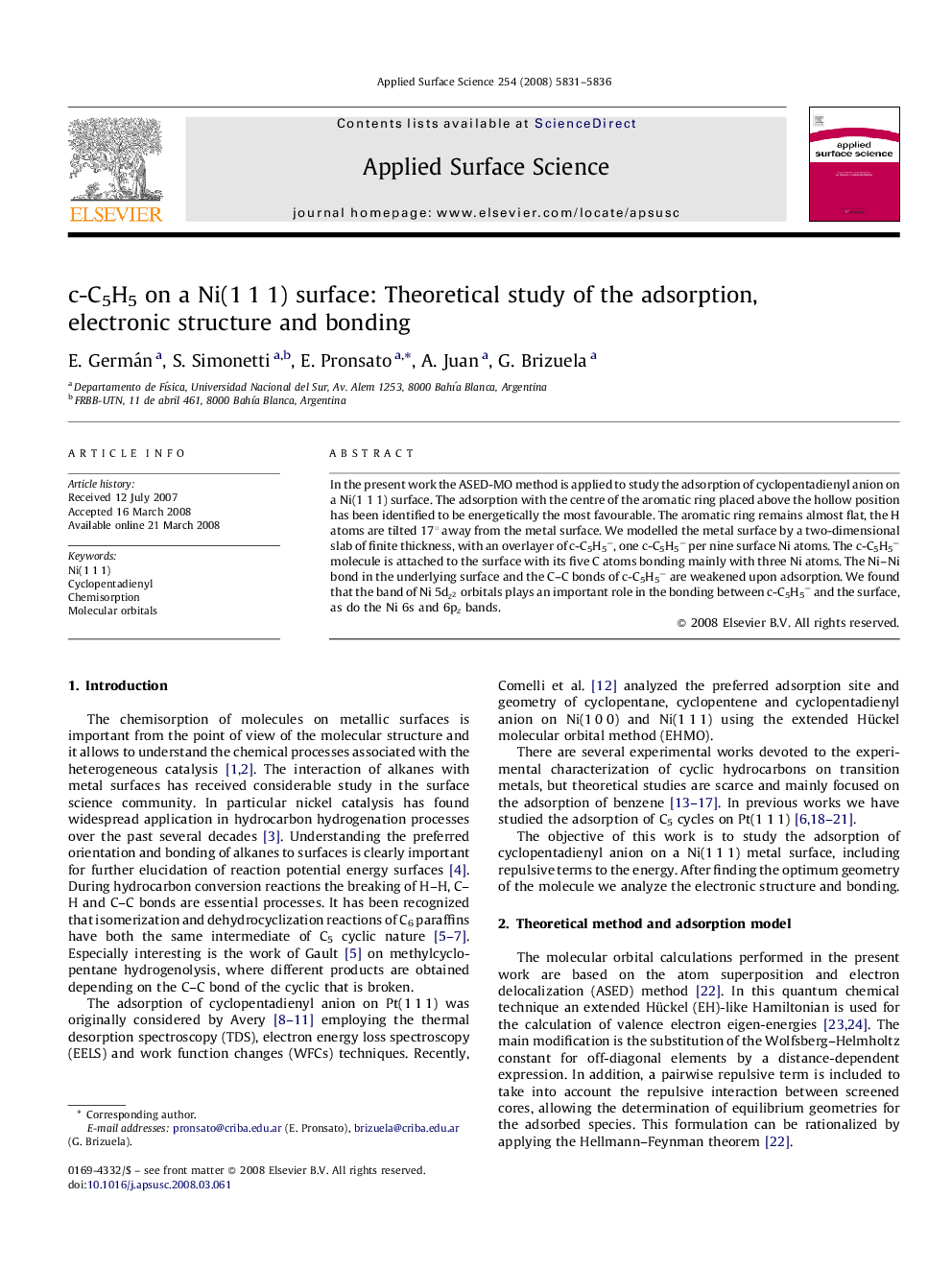| Article ID | Journal | Published Year | Pages | File Type |
|---|---|---|---|---|
| 5362384 | Applied Surface Science | 2008 | 6 Pages |
Abstract
In the present work the ASED-MO method is applied to study the adsorption of cyclopentadienyl anion on a Ni(1 1 1) surface. The adsorption with the centre of the aromatic ring placed above the hollow position has been identified to be energetically the most favourable. The aromatic ring remains almost flat, the H atoms are tilted 17° away from the metal surface. We modelled the metal surface by a two-dimensional slab of finite thickness, with an overlayer of c-C5H5â, one c-C5H5â per nine surface Ni atoms. The c-C5H5â molecule is attached to the surface with its five C atoms bonding mainly with three Ni atoms. The NiNi bond in the underlying surface and the CC bonds of c-C5H5â are weakened upon adsorption. We found that the band of Ni 5dz2 orbitals plays an important role in the bonding between c-C5H5â and the surface, as do the Ni 6s and 6pz bands.
Related Topics
Physical Sciences and Engineering
Chemistry
Physical and Theoretical Chemistry
Authors
E. Germán, S. Simonetti, E. Pronsato, A. Juan, G. Brizuela,
